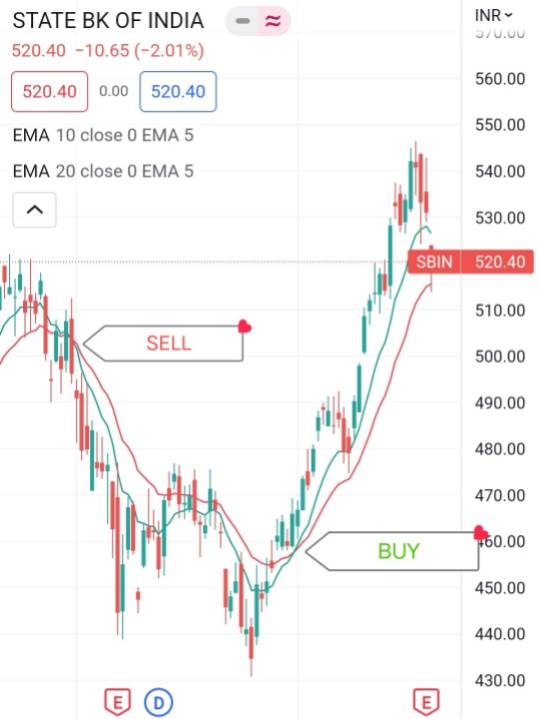In this article, we are going to learn about the moving average and crossover moving average strategy. First of all, we are going to learn what is moving average and what kind of moving averages are there in the market and what is the significance of this moving average? Later on we will be discussing about the Crossover moving average strategies.
What is Moving Average?
Moving Average is defined as the average price for a trading period over a specified time frame. Moving averages are used to smooth out the action price and tells the current trending market whether it is on uptrend, sideways or downtrend.
Moving averages are also known as the technical tools that can be used on the chart and this can be used in conjunction with other technical indicators like RSI, MACD, support and resistance etc. for better entry and exit.
There are three types of moving average at we use. These are given below:
- Simple Moving Average
- Exponential Moving Average
- Weighted Moving Average
We will discuss each of them one by one:
Simple Moving Average (SMA)
A Simple Moving Average is an indicator that is used to show a line on the chart based on the average price of the trading instrument over a set number of time periods. Let us understand it by an example:
Suppose the price of the trading instrument over the last 5 days are 48, 49, 50, 51, and 52. If we take the average of these values the outcome will be 50. So, we can say that a 5 day SMA has an value of 50 and we can say that a simple moving average is the average of the trading instrument over the set period of time. Similarly,10 days SMA will be calculated on the basis of previous 10 prices on a particular time frame.
Exponential Moving Average
An Exponential Moving Average is defined as the Moving Average that gives more weightage to the recent price. As we have taken the example of SMA in above paragraph. But if give more weightage to the recent price 52, then to 51 and so on, then the moving average will be coming the exponential moving average. It makes this moving average more faster and reactive and provides the early entry and exit signals.
Weighted Moving Average
A Weighted Moving Average is defined as the average that assigns a weighting factor to each of the price in the price period for calculation.
I hope you understood the basics of Moving Average. We will look some Crossover Moving Average Strategy.
Crossover Moving Average Strategy
There are many crossover moving average strategies available but trader choose the crossover moving average strategy according to their own prospective and their experience. Here we will guide you how the traders take the trade on the basis of crossover moving strategy. We are not giving any strategy to trade but we are giving you the educational content on the basis of the crossover moving strategy.
- 5 day SMA / 20 day SMA
- 5 day EMA / 50 day SMA
- 10 day EMA / 20 day EMA
- 10 day EMA / 50 day EMA
- 15 day EMA/ 30 day EMA
- 15 day EMA / 150 day EMA
- 10 day SMA / 200 day SMA
- 50 day SMA / 200 day SMA
We will understand it by taking an example of one crossover moving average strategy. If you need more explanation of the other moving average crossover strategies then please comment.
10 day EMA / 20 day EMA
This crossover moving strategy is very effective and tells user the trend reversal very effectively and you can trail your stop loss according to this strategy.

Above chart is shown of State Bank of India on daily basis. We can clearly see that there was a sell on the stock when the price was at approximately 500. At that time 10 days ema crossing the 20 days EMA below and it was in buy condition when 10 days Ema cross 20 days Ema and it was around 455 price.
You may need to check the other crossover moving average Strategies and you can develop your own strategy based on your experience and knowledge in the market.
FAQ
What is crossover moving average strategy?
Crossover moving average strategy is giving the indication that the stock is going in the upward or in the downward direction. It is moving average cross over the other moving average.
if you have any queries kindly let us know in the comment section.
Also check RSI
4 thoughts on “Moving Average and Crossover Moving Average Strategy”